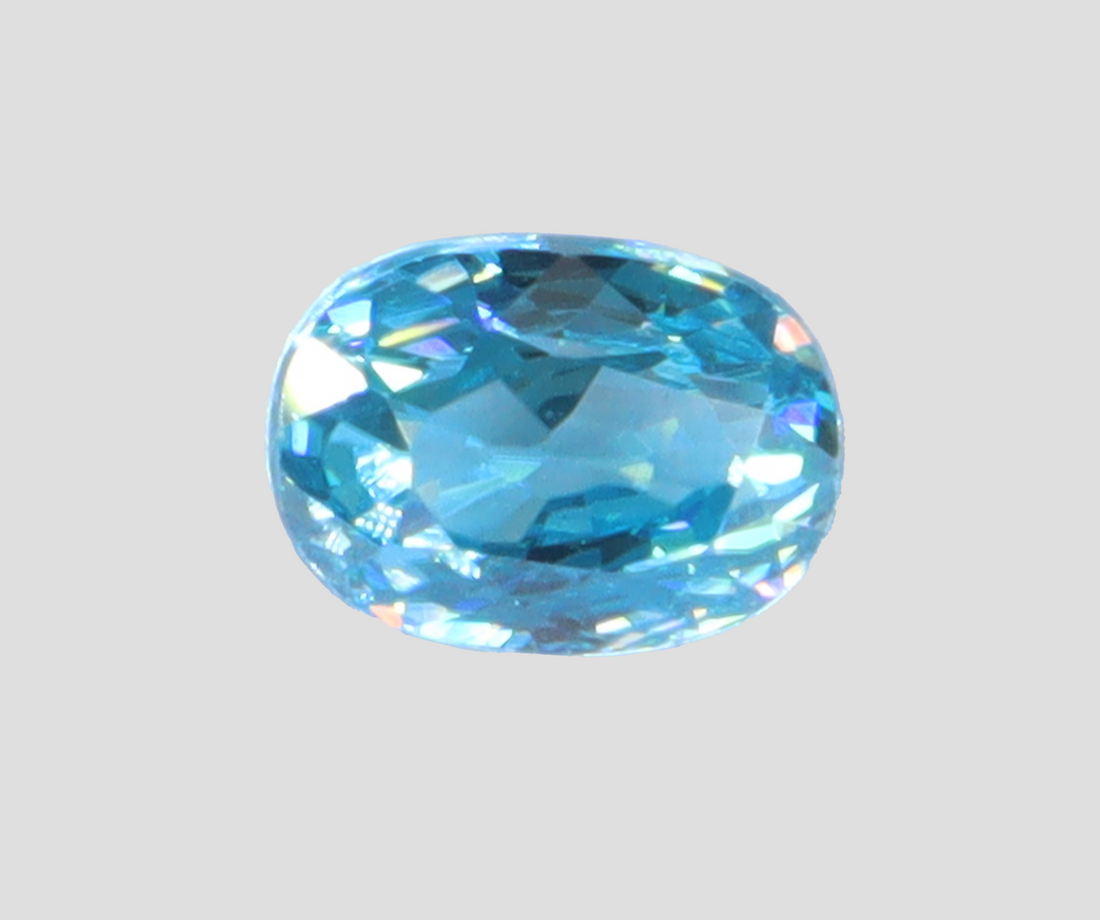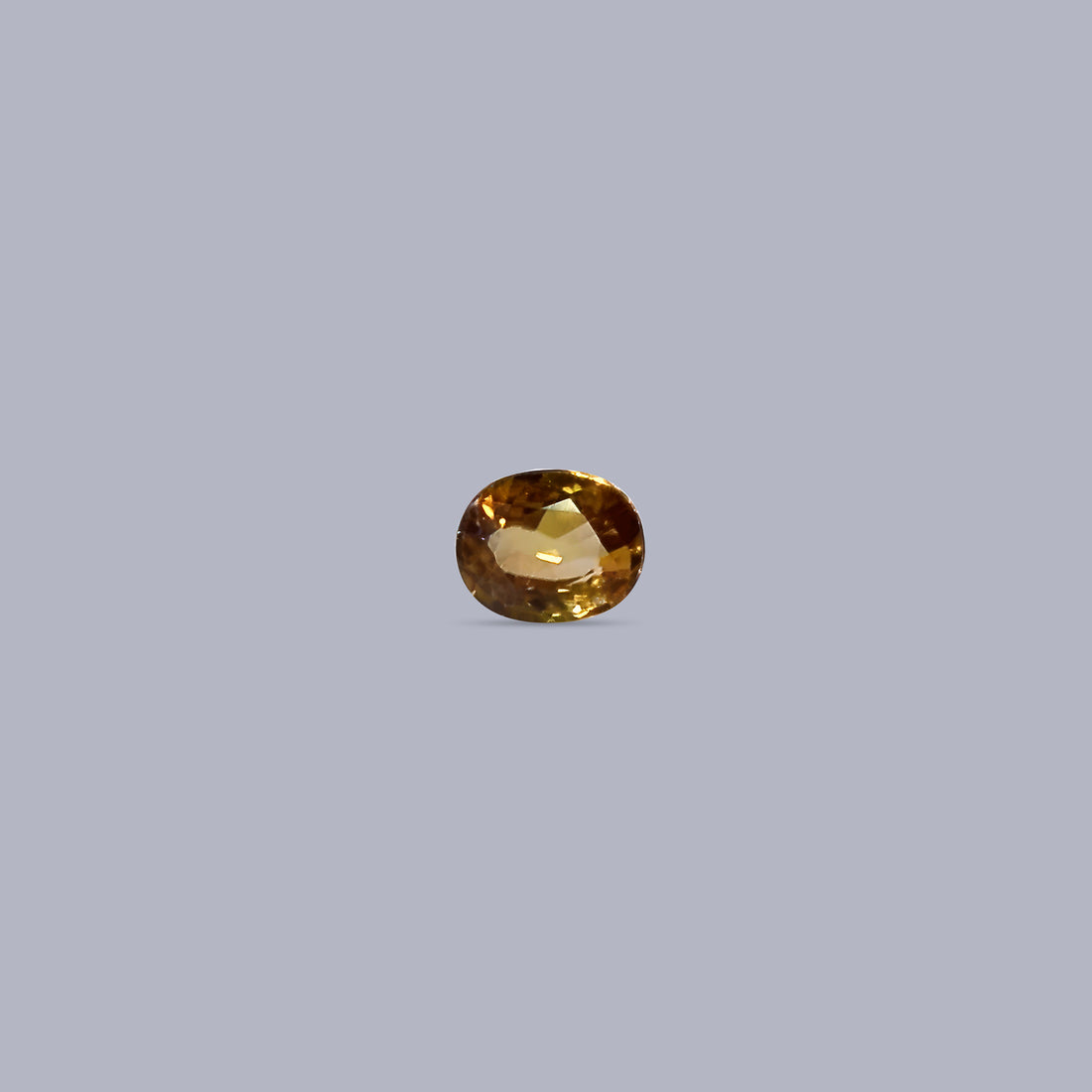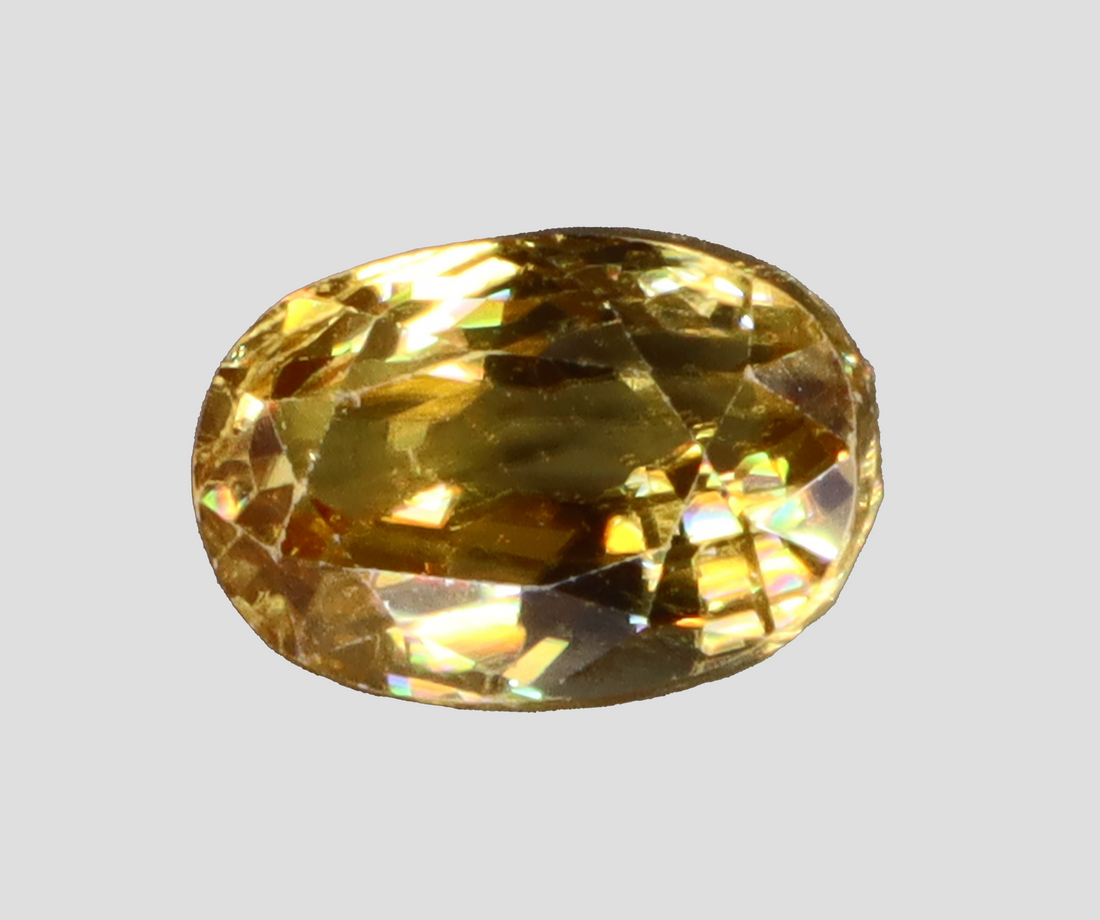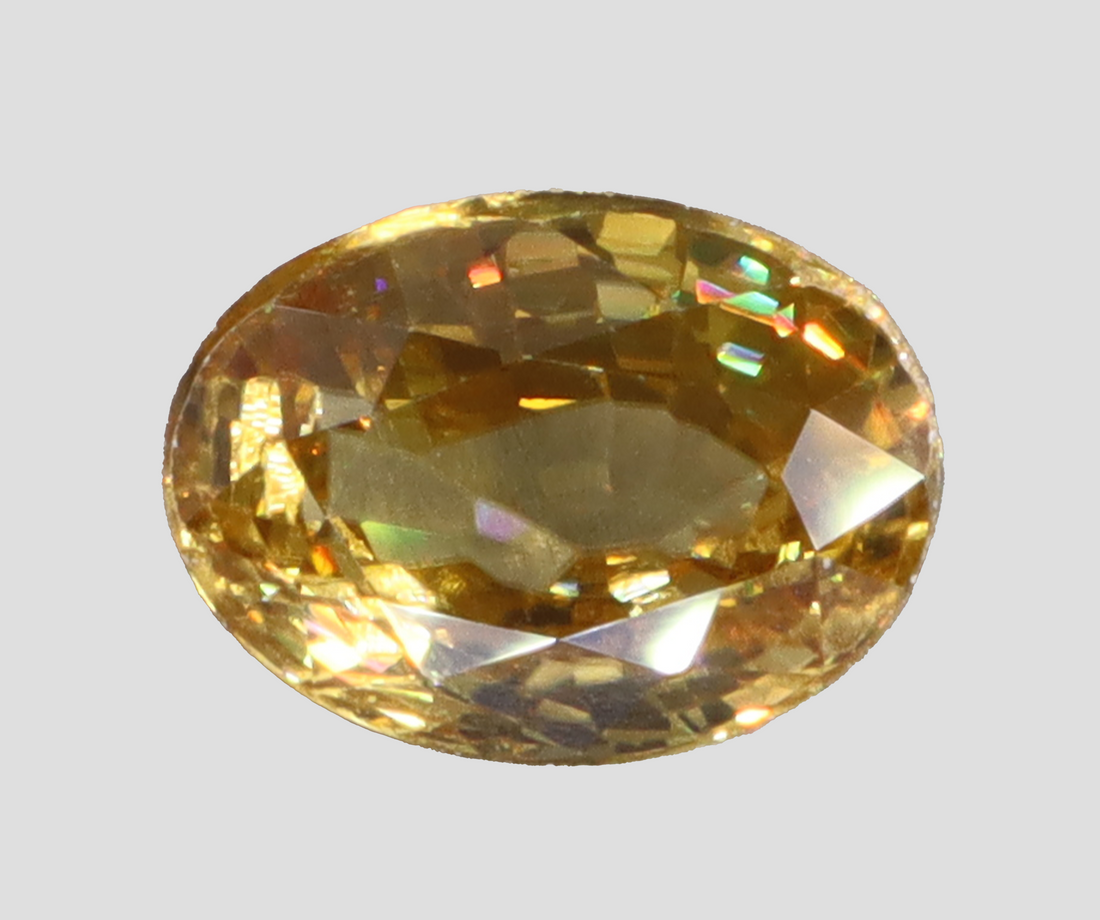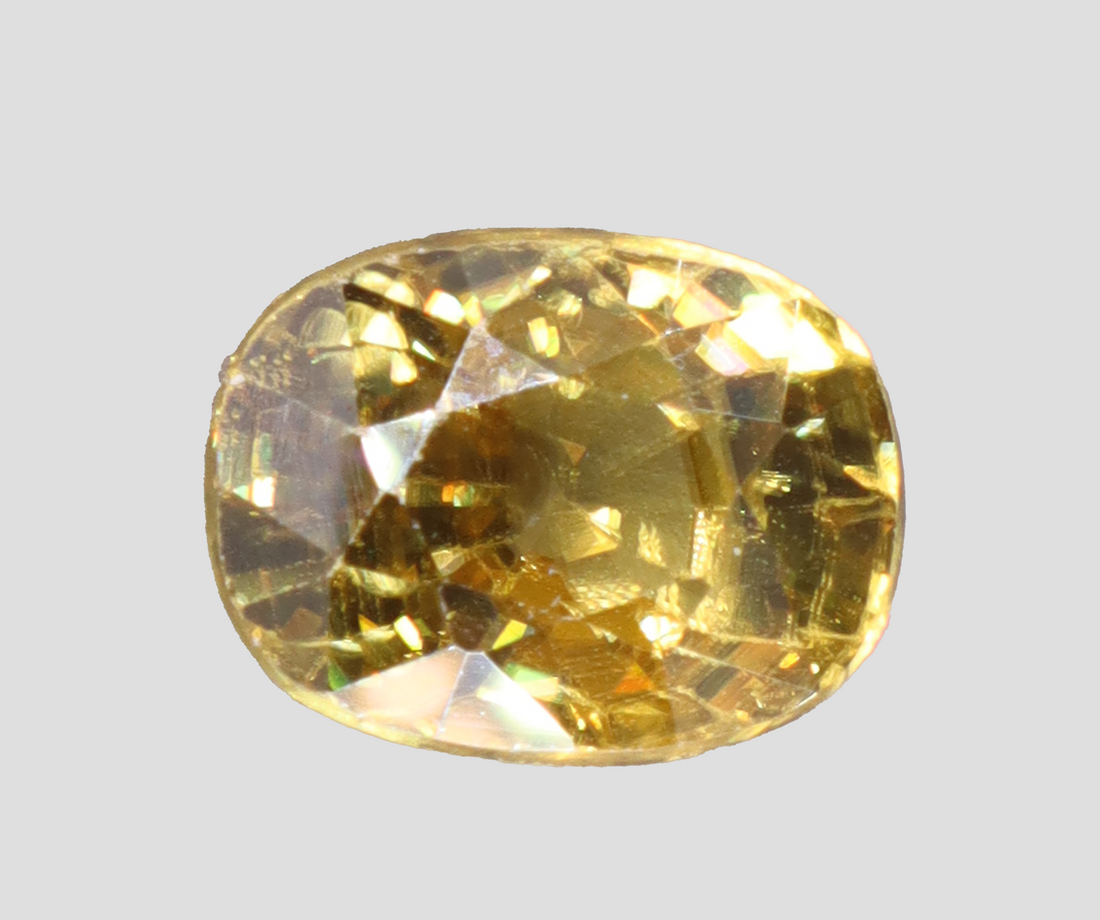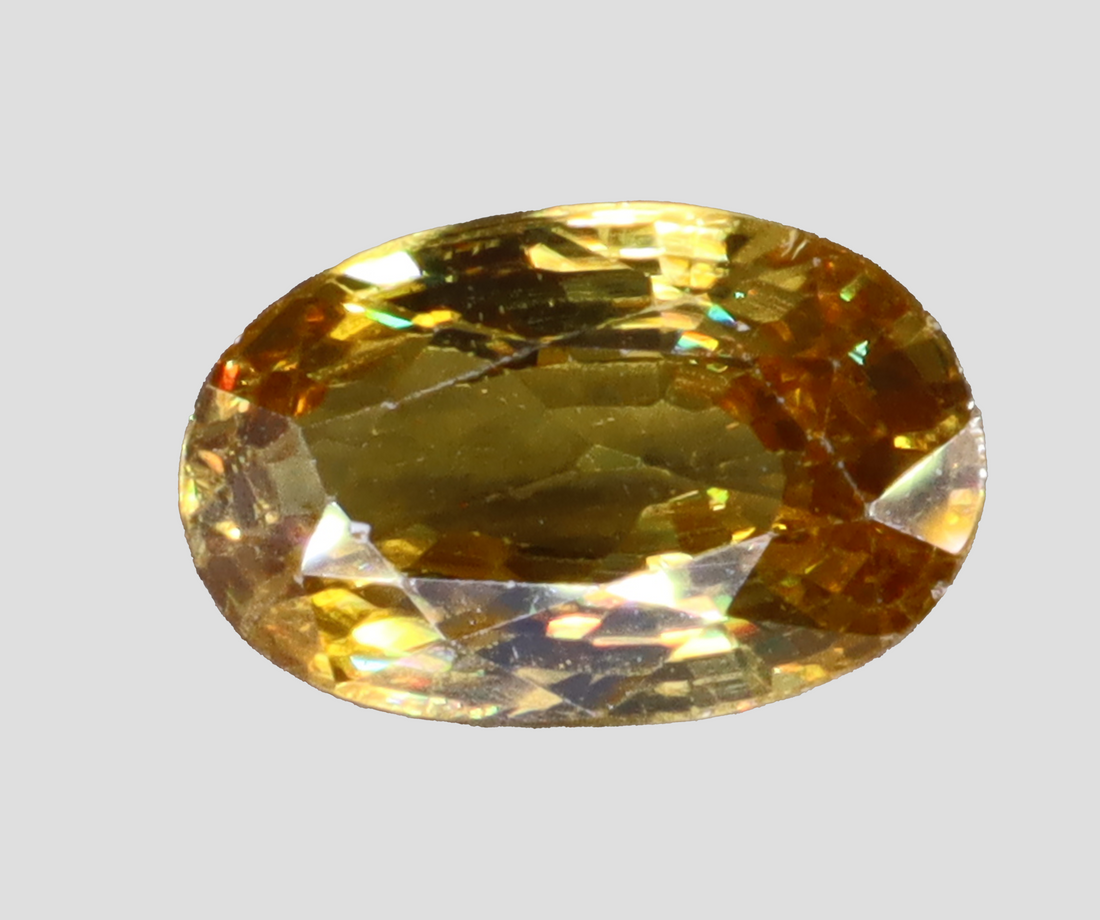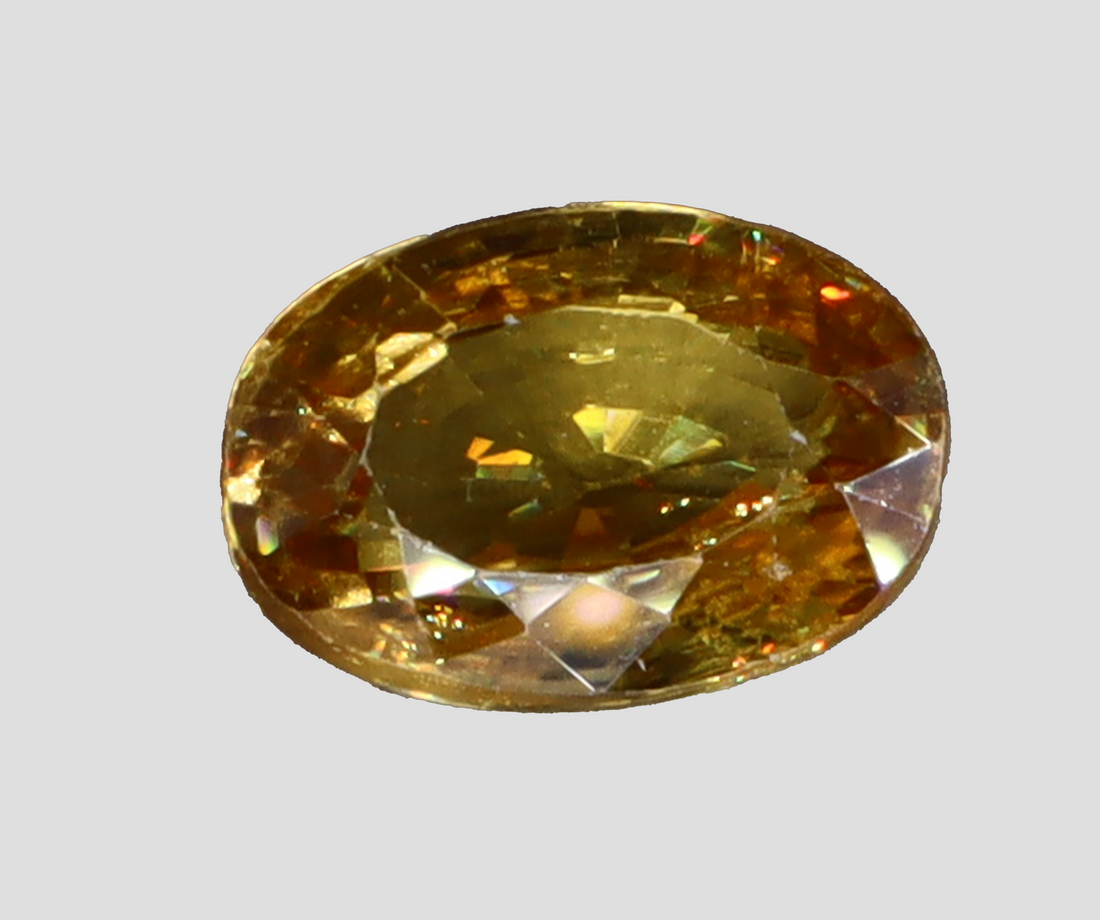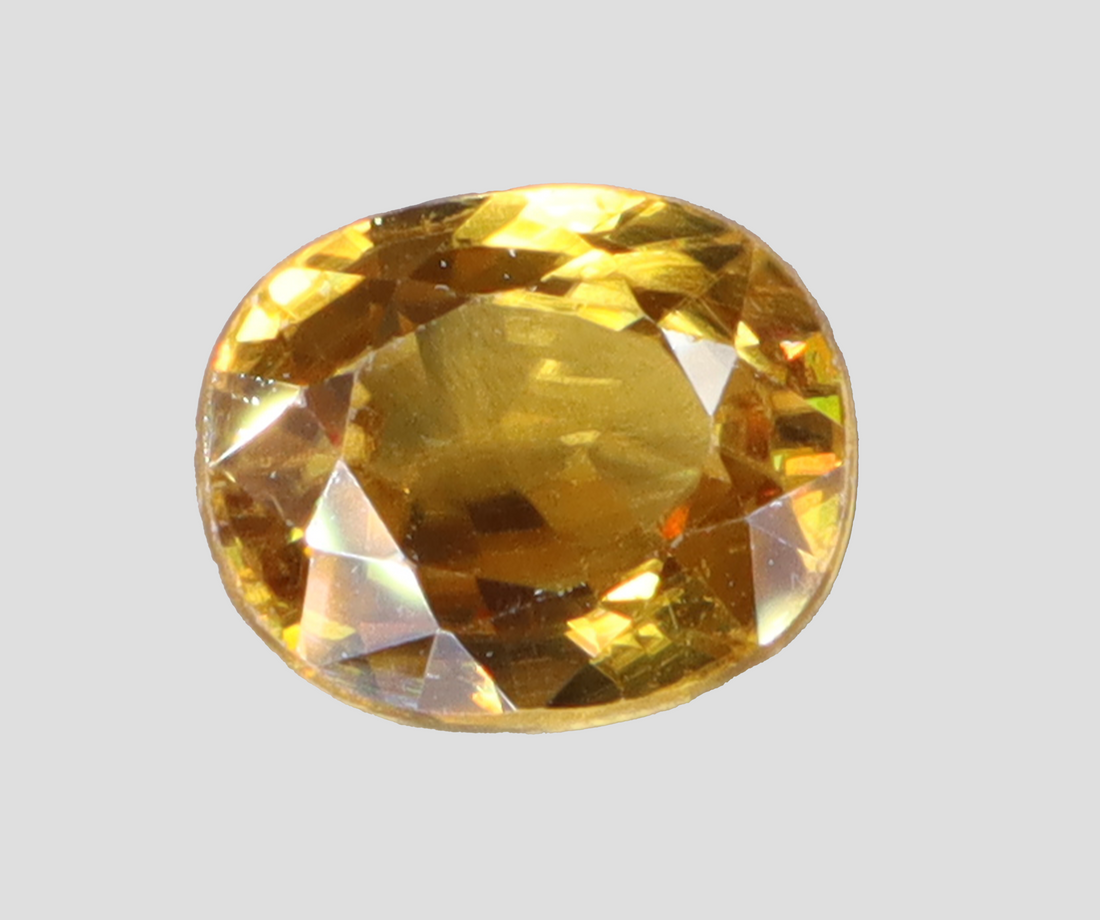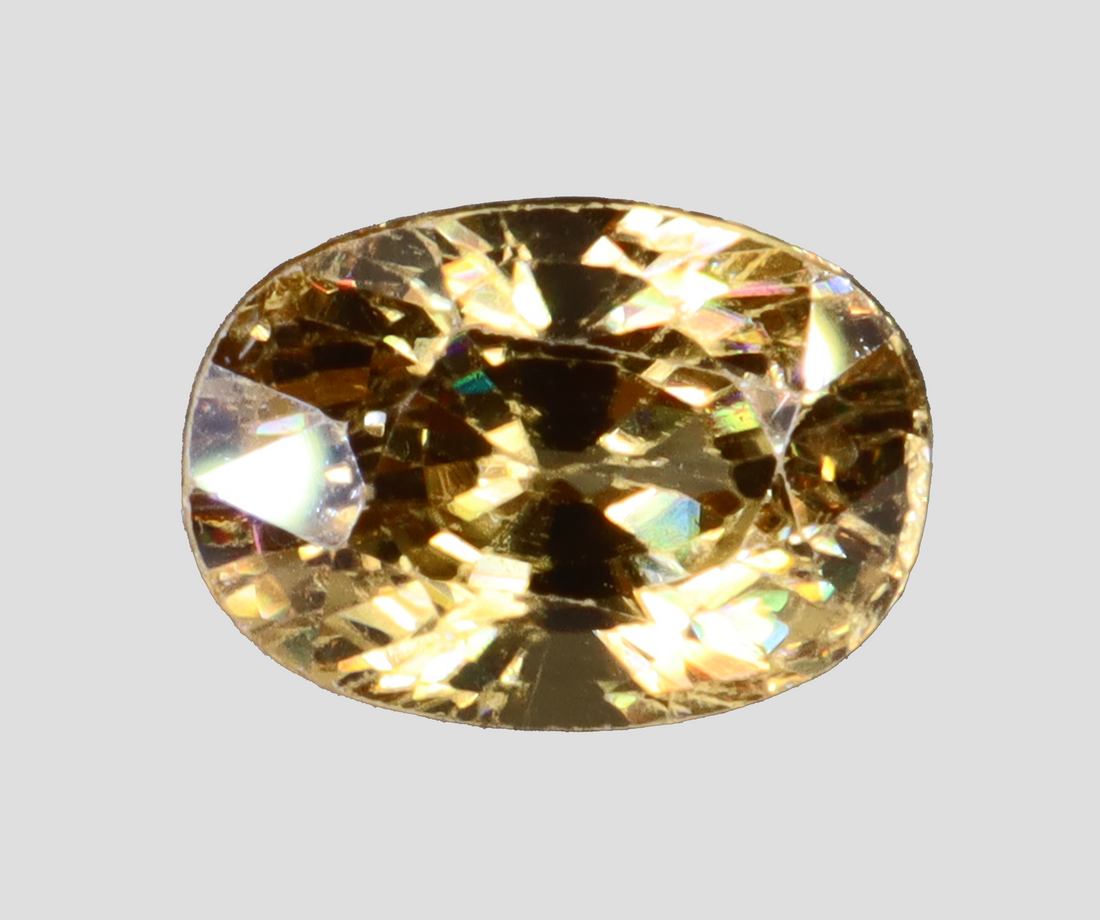This article serves as part of an ongoing series of profiles on the different varieties of precious & semi-precious gemstones. To view the entire list, click here.
Embarking on a journey through time, zircons are the oldest minerals found on Earth, intriguingly boasting a rich history spanning billions of years. Scientifically known as zirconium silicate, these mesmerizing zircon crystals are celebrated for their vibrant colors, dazzling displays of multi-coloured light, and high refraction indices. Zircons are often confused with cubic zirconia due to their similar names. Unlike cubic zirconia, however, which is a completely different and synthetic (man-made) gemstone, zircon is a natural gemstone that has been esteemed for its brilliance and fire over centuries.
Throughout this guide, we will uncover the intricate formation and occurrence of the zircon, explore its various colors and unique inclusions, discuss common treatments and enhancements, evaluate quality factors, delve into cost considerations, and examine its intriguing significance in astrology. Join us on this journey to understand everything you need to know about zircons.
1. Zircons - Formation & Occurrence
Zircons owe their origins to molten magma that solidifies into igneous rocks, such as granite and syenite, through a crystallization process occurring under intense pressure over millions of years. In addition to being found in igneous rocks, zircons are also discovered in sedimentary and metamorphic rocks. Through geological processes, zircons may become part of sedimentary rock formations, preserving their durable and timeless characteristics. Moreover, in metamorphic rocks, zircons may undergo transformations due to intense heat and pressure, adding further layers to their geological history.
Over time, zircons may also undergo radiation-induced damage, leading to a state known as metamictization. Metamict zircon is formed when the mineral is exposed to alpha particle radiation from radioactive elements, such as uranium and thorium, which are sometimes present in the mineral. The radiation causes the crystal structure of zircon to degrade, resulting in a loss of crystal structure and the formation of metamict zircon, which is essentially non-gemstone quality. Each metamict zircon stands as a testament to the dynamic and ever-changing nature of our planet's geological history.
 Rough zircon crystals
Rough zircon crystals
2. Where Are Zircons Found?
Geography plays a pivotal role in shaping the unique tapestry of zircons, infusing each gem with distinctive characteristics based on its place of origin.
One such noteworthy locale is Madagascar, where the rugged landscapes give rise to zircons boasting a vivid spectrum of colors. The geological conditions in this region contribute to the gem's vibrant and diverse palette, making Madagascar a significant source for zircons with unique visual allure.
In Sri Lanka (Ceylon), alluvial deposits contribute to the formation of zircons known for their exceptional clarity. The geological processes in these deposits result in gemstones that exhibit transparency and purity, distinguishing Ceylonese zircons in the world of zircons. Sri Lanka's contribution to the realm of zircons extends beyond just color; it adds a dimension of clarity that enhances the gem's overall appeal.
Southeast Asian regions like Thailand, Cambodia, and Vietnam also emerge as a treasure trove of zircon-rich regions. This expansive region encompasses diverse geological landscapes, each contributing its own nuances to the characteristics of zircons found there.
3. The Colour Span of Zircons
Zircons present a captivating kaleidoscope of colors, including blue, white, yellow, and green colours, that rival the most vivid creations of nature. Blue zircons reminiscent of deep ocean waters, greens echoing lush landscapes, and warm reds akin to the hues of a setting sun, while whites and yellows contribute their distinct charm — all contribute to the unique stories told by each zircon. This remarkable diversity arises from trace elements such as uranium present during formation, coupled with irradiation effects, making it a fascinating subject of study in the science of color.
Beyond their inherent beauty, zircons often serve as versatile and affordable alternatives to other gemstones like blue sapphires, yellow sapphires, and diamonds. This quality expands their popularity among those seeking a vibrant and cost-effective option without compromising on aesthetic appeal.
 Zircons occur in a range of colours such as blue, white, & yellow
Zircons occur in a range of colours such as blue, white, & yellow
A special mention in the world of zircons goes to the Hyacinth Stone, aptly named after the flower due to its warm and fiery tones. This specific zircon variety showcases deep reds and fiery oranges, characteristics attributed to distinct trace elements. The Hyacinth stone, coveted for its exceptional charm, adds a touch of warmth and vitality to the already diverse zircon color spectrum.
4. Common Inclusions in a Zircon
In general, gem-quality zircons that you find at your local jeweller contain minimum to no inclusions. Sometimes, however, within the heart of a zircon crystal lies a mesmerizing canvas of inclusions adorned with intricate details — mineral inclusions, gas bubbles, and even traces of radioactive halos.
- Mineral Inclusions: Like miniature works of art, minerals can sometimes be suspended within a zircon, offering a visual record of the gem's formation process. Each inclusion, whether a crystalline structure or a unique mineral fragment, is a testament to the geological conditions under which the zircon crystallized.
- Gas Bubbles: Gas bubbles are sometimes trapped within zircons and further contribute to its internal narrative. These bubbles, frozen in time during the gem's formation, offer insights into the volatile geological processes that took place. The size, distribution, and composition of these bubbles become markers, helping researchers reconstruct the dynamic conditions that existed when the zircon crystal was in its infancy.
- Radioactive Halos: These are a result of radiation damage over geological time, and leave a distinct mark within the zircon. These halos, often composed of concentric rings, provide a unique record of the gem's exposure to natural radioactivity.
The identification and interpretation of these inclusions transform a zircon from a mere ornament to a geological artifact, linking us to the Earth's ancient past. A study of these zircon inclusions can also point to its origin, and the various geological processes that occur deep under the Earth.
5. Common Treatments & Enhancements of Zircons
In the pursuit of enhancing the visual appeal of zircons, various treatments are employed, with heat treatment being the most common. This process involves subjecting the gemstones to high temperatures to bring out or intensify certain colors and improve clarity. The application of heat can transform the internal structure of the zircon, optimizing its inherent beauty and making heat treated zircons more visually stunning. Irradiation is another prevalent treatment method for zircons. This process involves exposing the gemstone to controlled radiation, which can induce changes in color by altering the crystal lattice structure.
Apart from heat treatment and irradiation, zircons might undergo treatments involving the application of oils or waxes. This is often done to enhance the stone's luster and appearance. By filling in surface-reaching fractures or imperfections, these treatments can contribute to a smoother and more polished exterior.
For consumers entering the vibrant gemstone market, understanding these common treatments is essential. It empowers one to make an informed decision, balancing appreciation for the enhanced beauty of treated zircons with the importance of disclosure and transparency in the gemstone industry.
| Mineral | Zirconium Silicate (ZrSiO4) |
|---|---|
| Colour Span | White, Blue, Green, Yellow, Red, etc. |
| Popular Origins | Madagascar, Sri Lanka & South-East Asia |
| Mohs Hardness | 6.50 - 7.50 (on a scale of 10) |
| Common Treatments | Thermal enhancement (heat treatment), Irradiation |
| Birthstone | December |
Zircons - A Quick Snapshot
6. Evaluating the Quality of a Zircon
The Gemological Institute of America (GIA) employs a stringent grading system to evaluate zircon quality, considering factors such as color intensity, clarity, cut, and carat weight. These 4Cs can be used as a tool to evaluate the quality of a zircon:
- Colour: Zircons come in a diverse range of colors. Colorless zircons are particularly valued for their brilliance and multicolored light effects. Other colours include blue, white, yellow, green, and red.
- Clarity & Inclusions: Zircons are typically highly transparent, and gem-quality specimens often contain minimal to no visible inclusions. Ideally, use a 10x magnifying loupe to check for internal inclusions of a zircon.
- Carat Weight: The size or carat weight of a zircon contributes to its overall value, with larger specimens often commanding higher prices. Typically zircons come in the range of 5 – 10 carats.
- Cut: Cutting zircons in rounds and ovals is a popular technique to maximize brilliance, showcasing the gem's vibrant play of colors. Look for a precisely cut zircon with symmetric facets.
Additionally, an easy way to identify zircons is through the double-faceting effect they exhibit, commonly referred to as 'facet doubling.' This phenomenon occurs due to the birefringence of zircon, causing light to split into two rays as it passes through the crystal, resulting in the appearance of doubled facets.

Zircons exhibit birefringence - which makes its facets look like they are doubled
7. How Much Do Zircons Cost?
Zircon prices encompass a broad spectrum influenced by factors such as color saturation, clarity, size, and overall quality. These elements all play pivotal roles in determining the cost of a zircon, with some specimens offering an affordable entry point into the world of gemstones, while others with exceptional qualities commanding higher prices. Understanding these price dynamics is crucial for an informed purchase, allowing consumers to balance their desired quality with budget considerations. On average, per carat prices for zircons can range from $40 to $200, depending on the factors influencing their quality and rarity.
8. Zircons in Astrology
Beyond their geological and aesthetic allure, zircons hold significance in astrology and spiritual beliefs. Zircon, the birthstone for December, is believed to possess various astrological benefits. Those who use zircon in spiritual practices or as a personal talisman believe it promotes mental clarity, aids in spiritual growth, and enhances creativity. Additionally, zircon is sometimes associated with bringing prosperity and strengthening one's sense of self.
Zircons, with their diverse range of colors, often act as more affordable and versatile astrological substitutes for their pricier counterparts. For instance, blue zircon may serve as an astrological substitute for blue sapphire, white zircon for diamond, and yellow zircon for yellow sapphire - offering individuals a broader range of choices aligned with astrological preferences and budget considerations.
Considering the astrological and metaphysical aspects, individuals interested in harnessing the properties of zircon are advised to seek counsel from certified astrologers or gemmologists. Their expertise can provide valuable insights on how to effectively use zircon in such contexts, ensuring a more informed and mindful approach to the gem's spiritual properties.
In conclusion, the allure of zircons lies not only in their aesthetic brilliance but also in the layers of history, science, and astrological significance they carry. From their tumultuous formation within the Earth's crust to their place in the gemstone market and spiritual realms, zircons continue to captivate and inspire. By understanding its properties, qualities, and value, you can make informed decisions when purchasing or selling zircon and appreciate its beauty in jewelry and collectibles.
 Zircons in Astrology
Zircons in Astrology
If you’re looking to buy authentic and original zircon stone online, we invite you to browse through Precious Earth’s collection of these stones – with yellow, white, and blue colours. Each gem comes with its lab-certified guarantee of authenticity, and with our lifetime returns & exchange policy – you can rest assured of a genuine purchase at the Precious Earth web store.


